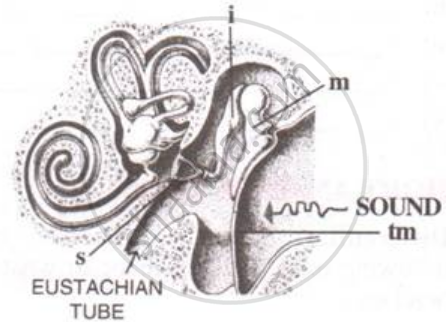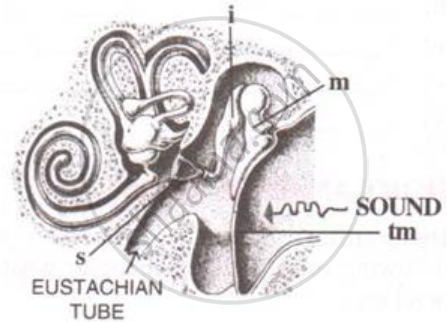Advertisements
Advertisements
प्रश्न
Give scientific reasons: We cannot distinguish colours in moonlight.
उत्तर
Cone cells in the retina are responsibe for colour vision. They are functional only in bright light. Moon light is unable to stimulate the cone cells; however, the rod cells respond to dim light. Hence, we can see in moon light but cannot distinguish colours.
APPEARS IN
संबंधित प्रश्न
Explain how the human ear works.
State the exact location of the Ciliary body
The three parts of human ear contributing in hearing are-
Given below is a set of five parts. Rewrite them in correct sequence.
Cochlea, tympanum, auditory canal, ear ossicles, oval window.
Given below is certain structure. Write against them its functional acivity.
organ of corti and ……………….
With reference to the human ear, answer the question that follow:
Give the technical term for the structure found in the inner ear.
What is the biological term for the three small bones present in the middle ear collectively?
The figure below is the sectional view of a part of the skull showing s sense organ:

Name the sense organ.
Draw a neat and labelled diagram of the human ear. With the help of this diagram, explain the construction and working of the human ear.
Give the main function of the following:
Cochlea
The figure below is the sectional view of a part of the skull showing a sense organ:

What are the parts labeled 'm', 'i' and 's'? What do these parts constitute collectively?
Draw a labeled diagram of the inner ear. Name the part of the inner ear that is responsible for static balance in human beings.
Complete the following sentence with appropriate Word
The sequence of ear ossicles of vertebrates starting from the tympanum is:
Name the three ossicles of the middle ear.
Mention the name of passage is the outer ear which carries sound waves to the eardrum.
The part of the ear that collects the sound from the surroundings is ______.
Vibrating particles travel all the way from the vibrating objects to the ear.
State the functions of the following:
Auditory nerve
The spiral organ possessing sensory cells for hearing is ______.
With reference to human ear answer the question that follow:
Name the part of the ear associated with Static balance.
